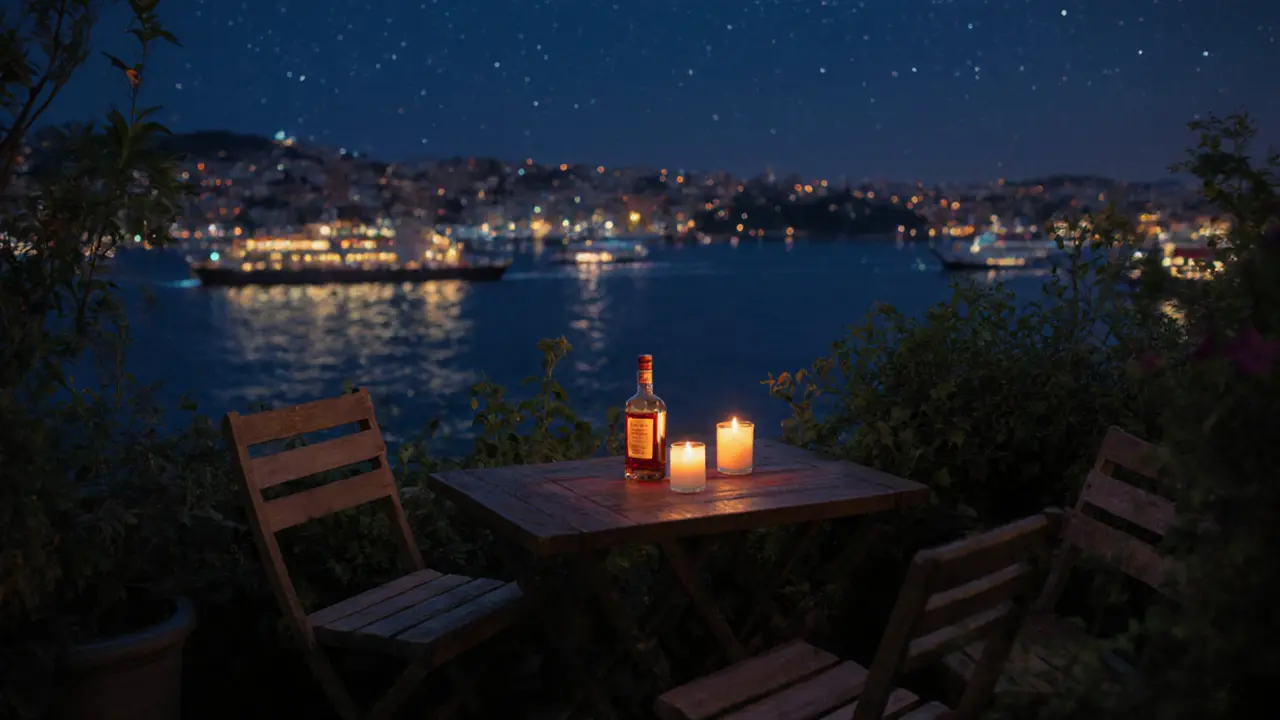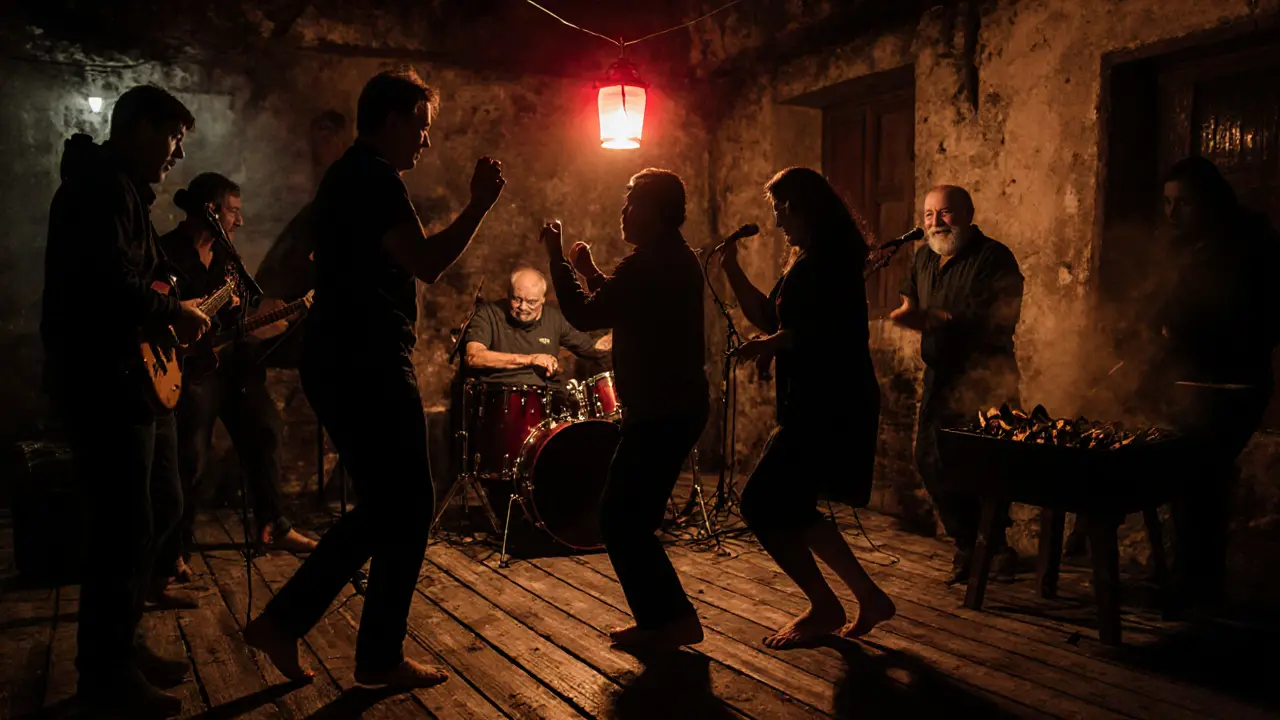Most tourists think Istanbul’s nightlife ends with a few crowded rooftop bars and loud dance clubs in Taksim. But the real pulse of the city beats in places you won’t find on Google Maps. It’s in the alley behind a kebab shop in Kadıköy, the unmarked door on the third floor of a 1920s building in Beyoğlu, or the rooftop garden where locals sip raki under string lights while the Bosphorus glows below. This isn’t about partying-it’s about belonging, even if just for one night.
The Backroom Bars of Beyoğlu
Start in Beyoğlu, but skip the main drag. Walk past the neon signs of tourist traps and turn down İstiklal Caddesi’s side streets. Look for a door with no sign, just a small brass bell. Ring it. If someone nods, you’re in. These spots don’t advertise. They don’t need to. Word spreads through friends, bartenders, and late-night taxi drivers.
One such place, Bar 1923, hides behind a bookshelf in a former printing house. The walls are lined with old Turkish novels, and the playlist shifts from jazz to Ottoman folk depending on who’s behind the bar. No menu. You tell the bartender your mood, and they craft you something-maybe a smoked fig and black pepper gin, or a warm cardamom-infused whiskey. It’s not a cocktail. It’s a story.
Another, Asma, sits above a Turkish hammam. You climb narrow stairs past steam pipes and arrive in a dim room with velvet couches and a single spotlight over a turntable. No DJs. Just vinyl-Turkish pop from the 70s, Italian film scores, and rare Anatolian rock. The crowd? Artists, poets, retired musicians. No one checks your ID. No one cares if you’re a foreigner. You’re either here to listen, or you leave.
Kadıköy’s Underground Scene
On the Asian side, Kadıköy doesn’t just have nightlife-it has soul. The area feels like a neighborhood that never got the memo about becoming a tourist hotspot. Here, the bars are small, the music is loud, and the drinks are cheap. But the real magic happens after midnight.
Çukurcuma is a quiet street lined with antique shops by day. By 2 a.m., it transforms. A hidden courtyard opens up behind a door with a red lantern. Inside, a band plays live bağlama and electronic beats fused together. Locals dance barefoot on wooden planks. Tourists stand frozen, unsure if they’re at a concert or a secret ritual. The owner, a former jazz drummer from Ankara, doesn’t charge cover. He just says, “If you like it, leave something on the table. If you don’t, leave quietly.”
Another gem, Yeni Bahçe, is a former vegetable warehouse turned into a hybrid bar-garden. Plants hang from the ceiling. Strings of fairy lights crisscross overhead. You order a glass of raki with a side of grilled sardines and sit under a fig tree. The vibe? Like being invited into someone’s backyard after a long family dinner. No one rushes you. No one tries to sell you anything. You just stay until the stars fade.

The Rooftops That Don’t Exist
Everyone knows the rooftop bars with infinity pools and Instagram filters. But the real rooftop scenes are unlisted. You need a contact. A friend of a friend. A text that says, “Be at the blue door at 11.”
One such spot, Yıldız Rooftop, sits atop a 1950s apartment block in Beşiktaş. There’s no elevator. You climb five flights of stairs. At the top, you’re greeted by a single table with two chairs, a bottle of homemade apricot brandy, and a view of the Bosphorus lit only by candles. The host-a woman who used to run a jazz club in Paris-doesn’t speak much. She just pours. The silence isn’t awkward. It’s sacred. You watch the ferries pass, the lights of Üsküdar flicker, and realize this is the Istanbul no guidebook shows.
Another, Çatı (meaning “roof” in Turkish), is accessible only through a secret staircase in a historic bookshop in Nişantaşı. The space holds no more than 12 people. On Fridays, a poet reads original work in Turkish, then English, then a mix of both. No one records it. No one posts it. You either remember it, or you don’t.
Where the Locals Go After Midnight
When the clubs close, Istanbul doesn’t sleep. It shifts. At 4 a.m., the real nightlife begins.
Head to Çarşı in Kadıköy. A small, steamy shack with plastic stools and a single grill. They serve midye dolma-stuffed mussels-with a squeeze of lemon and a shot of raki. The owner, a man in his 70s with a tattoo of a ship on his forearm, has been doing this since 1982. He doesn’t take cards. He doesn’t have a website. He just says, “Come back when you’re hungry.” And you do.
Or find İstanbul Kahvesi in Cihangir. A 24-hour coffeehouse where students, artists, and night-shift workers gather over strong Turkish coffee and cigarettes. The walls are covered in handwritten poems. Someone left a notebook on the counter. You pick it up. You read a line about longing. You write your own. Someone else adds to it the next night. It’s not a café. It’s a living archive.

What to Know Before You Go
These places don’t have opening hours. They open when the right people arrive. Don’t show up at 8 p.m. Expect to wait. Expect to be tested. A simple “Hello” won’t get you in. A genuine question-“Who played here last week?” or “Do you know where the old jazz club used to be?”-will.
Bring cash. Most of these spots don’t accept cards. And don’t wear fancy clothes. You’ll stand out. Wear something comfortable. Something that says you’re here to stay, not to take a photo.
Respect the silence. These aren’t clubs. They’re sanctuaries. Don’t scream. Don’t demand a playlist. Don’t ask for the “best spot.” If you’re lucky, someone will whisper it to you.
Why This Matters
Istanbul’s nightlife isn’t about the music, the drinks, or even the views. It’s about connection. In a city that’s been conquered, rebuilt, and reshaped over 2,500 years, the hidden bars are where the real history lives-in the quiet, the unspoken, the shared glances between strangers who become friends by sunrise.
These places survive because they’re not for everyone. They’re for those who listen. For those who understand that the best experiences aren’t advertised. They’re discovered.
And if you find one? Don’t tell everyone. Keep it. Guard it. Let it be yours-for now.
Are Istanbul’s hidden nightlife spots safe for tourists?
Yes, but only if you respect the culture. These spots are not tourist attractions-they’re community spaces. Locals appreciate quiet, respectful guests. Avoid loud behavior, don’t take photos without asking, and never insist on being served. If you’re welcomed, it’s because you showed humility, not because you’re a foreigner with money.
Do I need to know Turkish to enjoy these places?
No, but a few basic phrases help. Saying “Teşekkür ederim” (thank you), “Lütfen” (please), or “Ne var?” (What’s happening?) opens doors. Most bartenders speak some English, but they’ll respond more warmly if you try. Body language matters more than fluency. A smile, a nod, and patience go further than perfect grammar.
What’s the best time to experience Istanbul’s secret nightlife?
Weekends are best, especially Friday and Saturday nights. But the real magic happens after 2 a.m., when the crowds thin and the true regulars arrive. Don’t rush. These places don’t open on a schedule-they open when the energy is right. Show up too early, and you’ll be alone. Show up too late, and you might miss it.
Can I find these spots without a local guide?
You can, but it’s harder. Google Maps won’t help. Start by asking hotel staff who’ve lived in Istanbul for years-not front desk clerks. Visit local bookshops, art galleries, or record stores. Talk to the owners. They’ll point you toward the right alley, the right door. Trust the quiet ones. They know.
Is there a dress code for these secret venues?
No formal dress code exists. In fact, dressing too nicely can work against you. Locals wear jeans, simple shirts, or even sweatshirts. Comfort matters more than style. You’re not going to a club-you’re going to a living room with a view. Leave the heels, the blazers, and the designer bags at home.
Are these places expensive?
Not at all. Cocktails at these spots cost between 150 and 300 Turkish lira (roughly $5-$10). Food like grilled fish or stuffed mussels runs 100-200 lira. You’ll spend less than you would at a tourist bar in Taksim. The value isn’t in the price-it’s in the experience. You’re paying for memory, not a drink.
